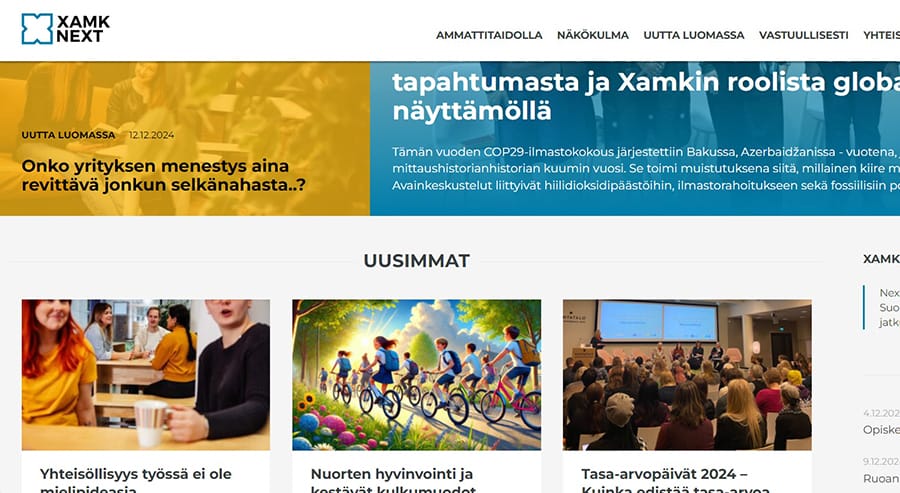Do we need to redefine internationalization?
While typically defined as a tool for enhancing the quality of education and research, internationalization´s most obvious terrains until now have been student and academic mobility. These have been tools and means to an end for higher education institutions to increase their level of internationalization.
Needless to say, that those got badly bewildered lately by the Covid-19 pandemic. What does the future hold for internationalization of HEIs? Will international mobility flourish again? Is there a way back to our old normal? Finally the million-dollar question: Do we have to reimagine comprehensive internationalization on our campuses?
Effects of the new financing model on international mobility

The global corona pandemic was not the only reason for the hit that international mobility has taken. The newest funding model for universities of applied sciences, which entered into force this year, is mainly based on the amount of degrees produced and on the pace of proceeding of studies. To put it simple; the faster a student graduates and is enters the job market, the more a university is rewarded financially.
What comes to the emphasis of international mobility specifically, the new model brought about major changes. Before, international mobility – including incoming and outgoing student- and staff exchange- were important indicators and as such, served as a basis of the financing a university received.
I recall sitting in regular international affairs meetings 10 years ago, where every department had to report if the target numbers have been reached, which meant have they managed to send out and receive enough students and staff. Therefore, international mobility was also heavily promoted.
You get what you measure
The weight of the internationalization indicators already decreased in the 2017-2020 financing model; however, the new funding scheme clearly rewards universities of applied sciences where students complete their studies on time or even faster.
Although going on Erasmus exchange in theory should not extend/delay student´s study time, in reality it often adds an extra semester in case students cannot study the exact same courses that they were supposed to in their home institution.
According to the Finnish National Agency for Education, international student mobility has been in decline since 2018. Higher education institutions simply adjust their focus to the metrics they are held against. What you measure is what you’ll get. Period.
Internationalization as a cross-cutting theme
It would be untrue to claim that internationalization would have been completely left out of the new financing model. However, compared to the previous one, the new model does not tie internationalization to mobility indicators, but mentions internationalization vaguely, somewhat undefined, leaving it open to interpretation.
The way I see it is that universities of applied sciences are given the freedom to define internationalization in their own framework and redesign their approach to attract and retain international talent. This shines through Xamk´s strategy, where vitality through international activities is defined as one of Xamk´s three strategic spearheads “Our international activities create expertise, attract international workforce and open up cooperation and business opportunities.” (Xamk Strategia 2020-2030, p. 4.)
Talent Boost
The Talent Boost programme, launched in 2021, was designed for the exact same purpose: to attract and retain international talent with a cross-cutting approach.
The purpose of the launch was to make Finland better known and more attractive to international talent.: “The programme coordinates policies on employment, business and industry, immigration, and research, education and innovation (RDI) with a view to strengthening the availability of skilled labour, labour market matching, the quality and internationalisation of companies and RDI activities.” (Ministry of Economic Affairs and Employment of Finland, 2021)
Disruption of international mobility?
Pandemics throughout history are known for their effect of accelerating disruption. Coronavirus has without a wedge of doubt completely disrupted the way in which universities and universities of applied sciences have been traditionally operating. Even though digital disruption has been transforming higher education for years now, the current pandemic has given it a major shove.
At Xamk we have experienced a very abrupt, however almost seamless transition of teaching and learning from face-to-face to online delivery. When borders closed down and traveling was off limits, physical mobility was replaced by virtual mobility. Shifting to a completely online environment with the help of ICTs has allowed students to obtain the same benefit as a student of physical mobility, without having to travel. Or has it actually given the same benefits?
For me, virtual mobility is like as eating food without salt. Yes, it does fill your stomach, but it gives you no pleasure.
One option in the future could be to enable both physical and virtual exchanges. Concerns have been raised though, that the institutionalization of virtual exchange might lead to a two-tier system of mobility: one for the elite few and another for the 80-90 % who cannot afford it, which would inevitably lead to enforcing inequality.
Redefining internationalization
One thing is for sure. In turbulent times like this, we need disruption to redefine internationalization. Developing and improving transnational education – including distance-learning programs, teaching partnerships, off-shore campuses and MOOCs –is a viable way to do it. Xamk has been pioneering in some of these areas
At the same time, barriers between internationalization of education and research should be removed at all levels, to reach the much needed synergy we are aiming for with internationalization being a the cross-cutting theme in the strategy.
We could start with making internationalization an overarching theme what comes to each curriculum and learning outcome. Internationalization should not only be rhetoric, a collection of fragmented terms and activities, but a comprehensive process.




